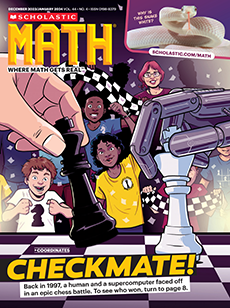Play the “Squirrels Go Nuts” video. Then hold an open-ended class discussion using the following questions:
• What was one question that Mikel Delgado was trying to answer with her experiment? (Possible answers: Do squirrels get frustrated? What happens when squirrels learn to expect something and then that changes?)
• What is frustration? (not getting what you expected)
• How did Delgado measure whether or not the squirrels got frustrated? (She looked at their tails.)
• Did the squirrels get frustrated? How did Delgado know? (Yes; they flagged their tails.)
• Delgado hypothesizes that frustration might be helpful. Why? (Frustration might cause animals to try new solutions to problems.)
• Describe a time you felt frustrated and why. What did you do to overcome your frustration?
